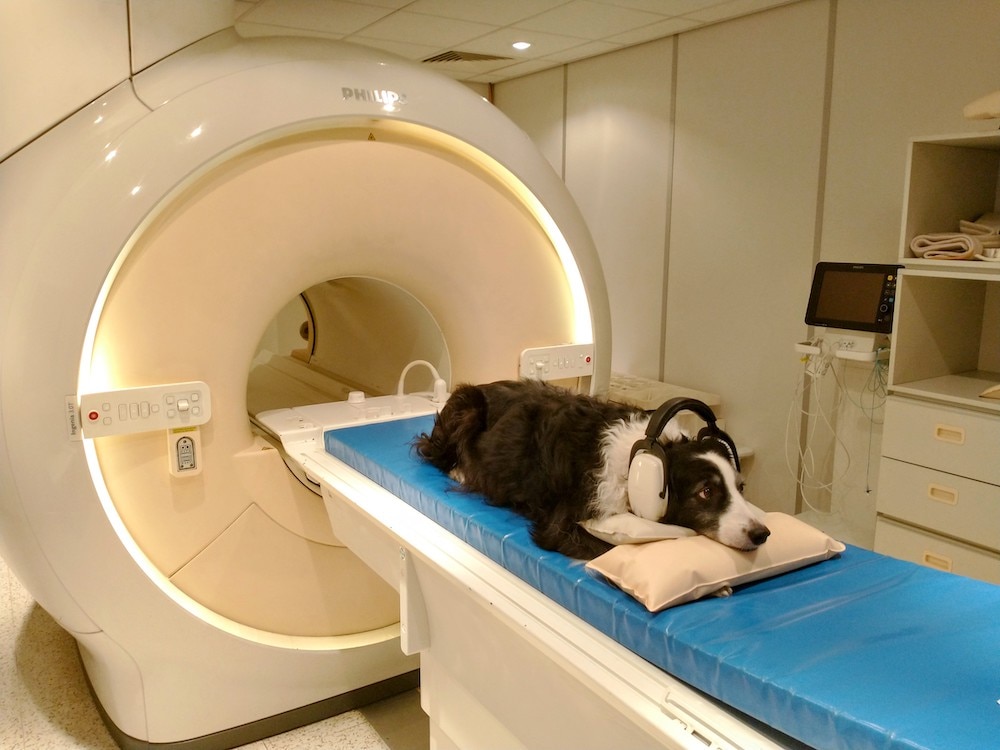Create a free profile to get unlimited access to exclusive videos, sweepstakes, and more!
New tricks! Dogs know the difference between language and gibberish
Your dog is listening to everything you say, and they understand more than we thought.

Be careful what you say around your dog, because it’s possible they understand a lot more than you give them credit for. Not only do dogs understand specific words associated to common objects, they can also distinguish between languages.
A recent study carried out by Laura Cuaya from the Department of Ethology and Institute of Biology at Eötvös Loránd University in Hungary, and colleagues, confirmed dogs’ ability to tell the difference between different languages. Their findings were published in the journal NeuroImage.
Figuring out what is going on inside the minds of dogs helps us understand the experience of humanity’s best friends, but it also helps us understand our own evolution.
“This is the first demonstration showing that a non-human animal brain can distinguish language,” Cuaya told SYFY WIRE. “We are not sure what happened in our human story, at one moment we were tuned for language. By testing other animals, we can try to complete the picture.”
Dogs have spent a significant amount of time — thousands of years — hanging out in close proximity to people, so they might be particularly tuned to hearing and distinguishing the specifics of human language.
Previous studies have shown that dogs are capable of associating specific words with objects, but it wasn’t clear if they had the ability to codify the dynamics of particular languages and parse them from foreign speech. This study indicates that they can.
The team used a slate of 18 dogs which were trained over the course of eight months to lay still inside an fMRI machine so that they’re brain activity could be measured while they were exposed to varying speech stimuli. Each of the dogs were given headphones to protect them from the loud noises of the fMRI machine and their owners were present in the room in order to keep them calm and comfortable. The dogs were also allowed to leave the testing scenario at any time, though Cuaya and her team indicated most dogs were happy to participate in the study and seemed proud of their accomplishments at the end of each study period.
The dogs were presented with pre-recorded audio either in Spanish or Hungarian, depending on their native language. Recorded audio was chosen, as opposed to real-time spoken language, in order to control for variables.
“We looked at the patterns of activity in the brain,” Cuaya said. “When the dog hears Hungarian the brain does one thing, when they hear Spanish, it does something else.”
By measuring activity in the dogs’ brains, the team discovered that different regions are active when dogs are presented with their native language versus foreign language. This suggest that while dogs don’t have a spoken language comparable to human speech, they do have some of the neurological software to parse different languages.
It might be that this ability arose over thousands of years of dogs living in close proximity to humans, or it might be inbuilt in non-human animals. Future studies will examine other animals which haven’t experienced the same sort of co-evolution to see if the same language ability is present. If so, it might suggest that the ability to understand language emerged in advance of spoken language itself.
“Brains are very good at picking out patterns, so it might be that other animals can understand the difference between different languages too,” Cuaya said.
Given the auditory signals present in all sorts of non-human animals, from mating calls to warning signals, it might be that the neurological building blocks for language are present in all sorts of animals for whom we don’t ordinarily expect to have complex language. It might also be that the foundation of language was laid down in our own ancestors long before we developed complex speech.
Whatever the case, it seems likely that dogs understand more of what we’re saying than we previously thought. So, be careful what you say around them, because they’re listening.


























